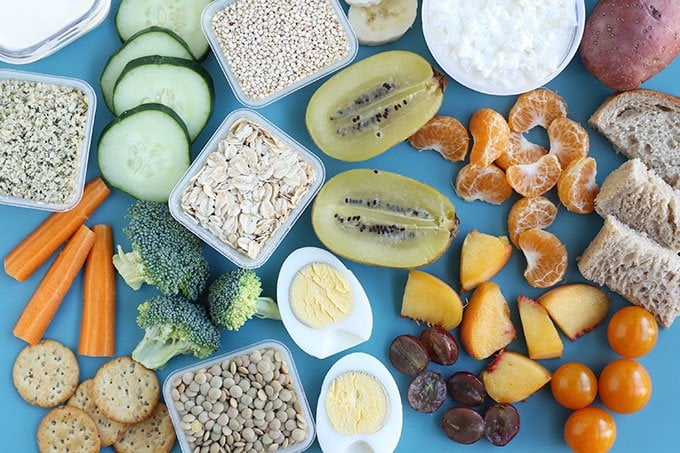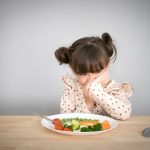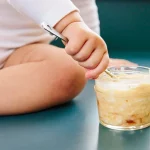Need ideas for healthy food for kids? We can help with that! Here’s our pea soup (puree) guide to the best kids’ snacks.
A baby’s first year is the feeding schedule. Worrying about inadequate nutrition and excitement It takes a lot (and stress) to introduce your baby to new foods, textures and tastes. This is the easy part. Now you are entering puberty. When your strong, intelligent and loving little one uses his newfound courage to challenge your ultimate healthy food plan.
This is when everyone tries to come up with a “kid-friendly” diet, says Yamileth Kazorla-Lancaster, MD, a pediatrician from Yakima, Washington, and host of the Veggie Doctor radio podcast.
Fear not: Healthy baby food is within reach, says Jill Castle, RD. There are security measures. (See below for details.) This is a guide to take you through the rest of your journey.

Baby food: what should babies eat and how much?
Variety is important in a child’s diet. But you don’t really care if each meal or snack falls into a different food category. “We don’t think about diversity in one meal or one day,” Cazorla-Lancaster said. But we think during the week.” Kids get too much. On a plate or a tray, too many high chairs at once, so it’s only natural to give them two chairs at a time.
Baby food is of course more than knowing what to feed your baby. Most babies are hungry every 3-4 hours, but before a meal or snack. Monitor your baby’s hunger signals. Every toddler is different so it is very important to have a plan and maintenance schedule. They don’t encourage you to burn all day.”
Young children should consume about 40 calories per inch of height per day. That means a 32-inch child should consume an average of 1,300 calories per day, according to the American Academy of Pediatrics. Use the AAP daily meals below to determine the type and amount of food you need to fill your beautiful Paw Patrol cup. Note that this is about a third of your load.
Onion stems
Here we bring wheat, rice, oatmeal, cornmeal and more to your child’s table bread, pasta, oatmeal and more. (good for you!) or refined (good for you), the former is better for kids’ diets, with regular fiber, B vitamins, and antioxidants. and micronutrients such as iron and zinc. The AAP recommends that whole grains make up at least half of your child’s whole grains.
Serve:
- 6 servings per day
- Bread: 1/4 or 1/2 loaf.
- Components: 1-2
- Pasta: 4 minutes.
- Dried seeds: half a cup
Yield
Canned and frozen fresh fruit is the best food for children. Make sure the fruit you choose is fresh and not sugar free. While 100% fruit juice technically belongs to the fruit category, the AAP limits its consumption to a maximum of 4 ounces (one cup).
Serve:
- 2-3 bites per day
- cooked or canned: 1/2 cup
- Raw ingredients: 1/2 tbsp
- 100% fruit juice: 1/4 to 1/2 cup
Vegetables
Raw, steamed, broiled, broiled, fried, fresh, frozen, and canned all fit well under the vegetarian umbrella. (such as 100% vegetable juice) Introducing vegetables to children is very important Dry vegetables are a concussion risk. I notice that there
Serve:
- 2-3 bites per day
- Cooking: 2-3 minutes.
- whole green leaves: – A cup
- 100% vegetable juice: 1/2 to 1/2 cup
Milk
Most dairy products (milk, yogurt and cheese) end up at the dairy point of sale. For those who don’t like cheese and butter. They are given shoes when they run out of calcium. Calcium-enriched soy milk also belongs to this group. Dairy products are an important healthy food for children. Contains calcium and vitamin D, which help build strong bones. Know that it’s okay to switch to skim milk or skim milk.
Part:
- Eat 2-3 times a day.
- Milk: 12 cups
- Cheese: ½ oz
- Yogurt: half a cup
The eggs are white
Soy products such as meat, poultry, seafood, eggs and tofu are proteins. Protein is a rich source of iron. They are needed for optimal red blood cell function, as children may stop drinking iron-fortified formula and not eat enough iron-fortified breakfast cereals. Thus, they are at greater risk of iron deficiency. This makes protein intake extremely important. “When it comes to getting protein, I encourage parents to focus more on seafood because both DHA and healthy fats are important for brain development,” says Castle.
Part:
- 2 servings per day
- Beef, chicken and fish: 1 ounce or 2 1-inch cubes
- Minced meat: 2 tbsp.
- Eggs: half to 1 whole
Legumes
Green peas, lentils and soybeans (hello again!) are also legumes. Although legumes contain different proteins and vegetables, they are not. But there are also different types of legumes as they are important for a child’s diet. “Legumes are rich in fiber, protein, and antioxidants, and as a bonus, they’re inexpensive and easy to incorporate into most meals,” says Cazorla-Lancaster.
Part:
- 2 servings per day
- hard-boiled eggs: 1 to 2 tbsp.
- Tofu: 1 oz
Water
Although there are no magic numbers for how much water your child should drink. But remember that water and milk are always best at this age. Water stimulates the digestive system and helps the child expel. Basically, a child’s body is irreplaceable. Get an 8-ounce cup that’s appropriate for your child’s age. That means two 8-ounce glasses of water per day for a 2-year-old.
Do not give children food or drink
While your primary goal is to find healthy foods for your baby, it’s also important to decide what foods and drinks to avoid.
Cola and fruit drinks
“Cut out caffeinated or sugary drinks like soda and fruit drinks, and strictly limit 100 percent fruit juice,” says Castle.
Sweet soy milk
“If you choose to avoid or reduce your baby’s milk intake, choose unsweetened and concentrated plant-based milks, such as soy or nut protein. You should also avoid low-protein plant-based milks, such as rice milk and almond milk that have not been processed to ensure good nutrition. You can find this in milk recipes to use.”

Smooth food
What do you say Think of a whole grape. Cherry tomatoes, candy, and cough syrup can easily slip down a child’s throat, causing choking. And that doesn’t mean kids shouldn’t eat grapes or tomatoes—just cut them up until the kid turns 5 (for hard candy, you’ll need to cut them up and avoid the cough drop altogether).
Uncut hot dog
Also, large pieces of meat and sausages are a choking hazard until about 5 years of age. Cut them into easy-to-cook 1/2-inch pieces before serving. (or smaller pieces)
Both nuts and seeds
These foods are very beneficial for your baby. But the risk of suffocation outweighs the benefits to children’s health. Wait until age 5 to safely give these snacks. Meanwhile, raw nuts and seeds are OK.
Lots of peanut butter
Sticky peanut butter is hard for kids to swallow, so put about a tablespoon of light oil on crackers or toast. (Crunchy is always hard.) Sticky foods like gum and marshmallows shouldn’t be ignored either.










